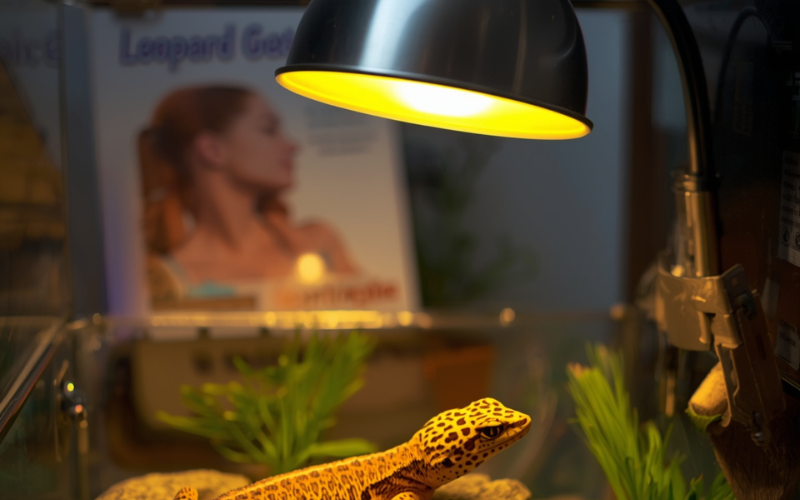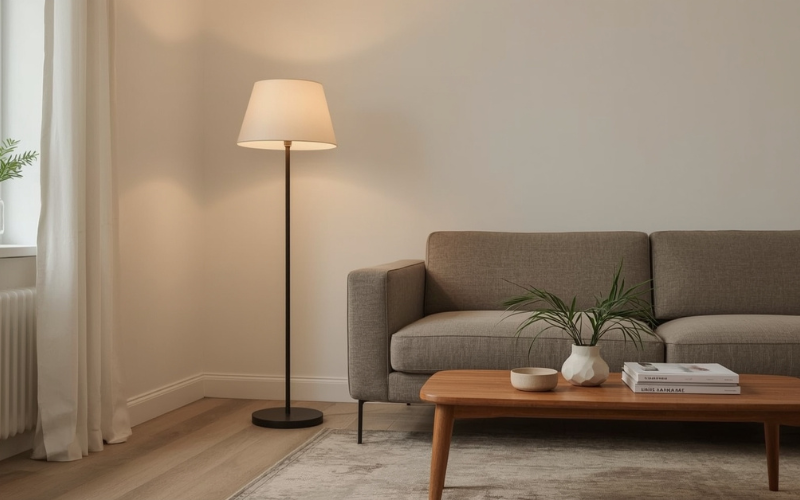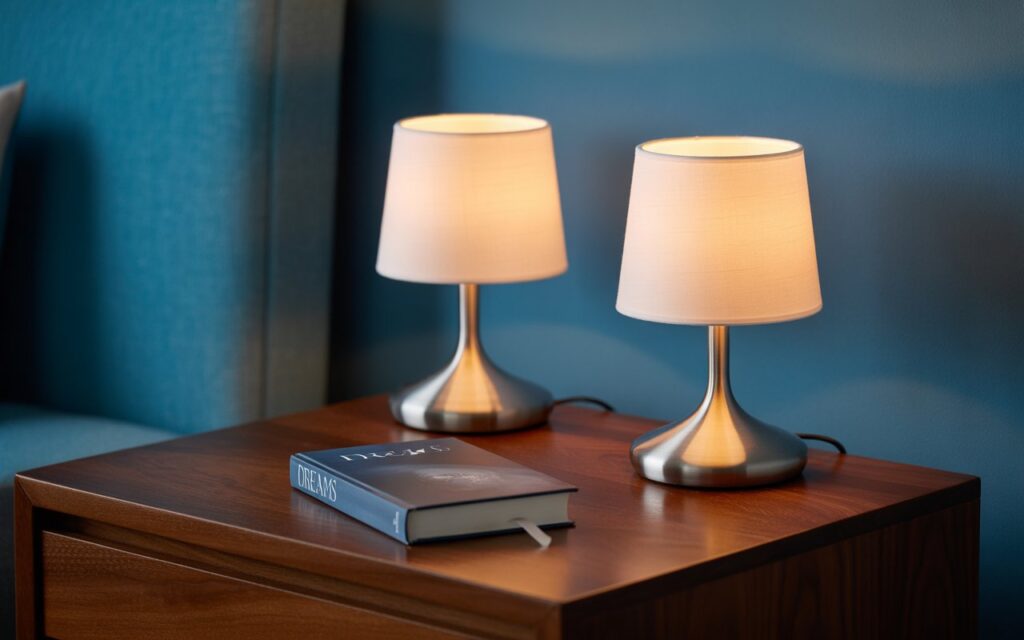
Introduction
If you are a leopard gecko keeper or considering becoming one, the question “do leopard geckos need a heat lamp” is essential to understand. This question comes up often because correct heating directly impacts your pet’s health and behavior. In this detailed article, you will learn why leopard geckos need a heat lamp, what options are best, how to set them up safely, and common mistakes to avoid. Addressing “do leopard geckos need a heat lamp” thoroughly ensures you provide a safe, comfortable, and natural environment for your gecko.
Table of Contents
1. Why Do Leopard Geckos Need a Heat Lamp?
The straightforward answer to “do leopard geckos need a heat lamp” is yes. Leopard geckos are ectotherms, which means they cannot internally regulate their body temperature. External heat sources like a heat lamp are necessary to enable proper metabolic function. Without adequate heat, they become inactive, stop eating properly, and are vulnerable to infections. A heat lamp replicates the natural warmth of the sun, which leopard geckos naturally bask in to raise their body temperature for digestion and energy.
Understanding the temperature a heat lamp provides is critical because it facilitates digestion and nutrient absorption. When a leopard gecko basks under a heat lamp, it raises its internal temperature, activating enzymes that break down food efficiently. This natural process is essential for growth, health, and longevity. So, when asking “do leopard geckos need a heat lamp,” it is clear that it is not optional but a key component of care.
2. Recommended Temperature Zones
One of the main reasons for the heat lamp is to create a temperature gradient in the enclosure. The warm side of the enclosure should reach between 88°F and 92°F, which is ideal for basking. The cool side should be around 75°F to 80°F. This temperature range allows the gecko to thermoregulate by moving between warm and cool areas as needed. At night, temperatures can drop to about 70°F.
Creating this gradient is essential because reptile metabolism is temperature-dependent. Asking “do leopard geckos need a heat lamp” is only half the story; how you use the lamp matters more. Position the heat lamp on one side to generate the warm basking zone while leaving the other side cooler. Use digital thermometers for accurate temperature monitoring.
3. Types of Heat Lamps for Leopard Geckos
When exploring “do leopard geckos need a heat lamp,” knowing which lamps to use is a pivotal part. The most recommended types are halogen heat lamps and ceramic heat emitters. Halogen bulbs emit infrared heat that penetrates deeply, which mimics natural sunlight’s warming effect. Ceramic heat emitters provide heat without light, which is excellent for nighttime warmth.
Other bulbs like incandescent bulbs are also usable but are less efficient and have shorter lifespans. Deep heat projectors are another option that produces infrared heat similar to halogen bulbs but without visible light. When selecting a heat lamp, wattage is essential; commonly, 50 to 75 watts are suitable for typical enclosure sizes, but you may need to adjust depending on your tank’s dimensions and your room’s ambient temperature.

4. Setting Up Your Heat Lamp Properly
To effectively answer the question “do leopard geckos need a heat lamp,” it is crucial to focus on installation. Proper setup involves:
- Placing the lamp at one end of the tank to create a clear temperature gradient
- Keeping the basking spot between 88°F and 92°F
- Using a thermostat or dimmer switch to avoid overheating
- Positioning the lamp carefully to prevent burns and stress
- Providing hides in both warm and cool zones so your gecko can thermoregulate comfortably
Secure the lamp properly to prevent accidents, and regularly check the temperatures with reliable thermometers.
5. Alternatives and Supplemental Heat Sources
For those wondering if a heat lamp is the only option, alternatives exist but usually serve as supplements rather than replacements. Under-tank heating pads provide belly heat that helps digestion, but they don’t replicate overhead sun warmth. Heat tapes can offer gradual warmth but must be carefully regulated.
While under-tank heaters support overall temperature control, the overhead heat lamp remains the primary heat source for naturalistic heating, answering why “do leopard geckos need a heat lamp” is a pronounced yes.
6. Nighttime Heating and Light Considerations
Leopard geckos experience cooler temperatures at night in their natural environment. When addressing “do leopard geckos need a heat lamp,” recognize that nighttime heating should not involve bright light. Instead, use ceramic heat emitters or low-wattage infrared bulbs if the temperature drops below desired levels. Avoid using red or blue lights as geckos do not see these well and they can disrupt natural sleep patterns.
7. Monitoring and Maintaining Your Heat Lamp
Maintenance impacts the answer to “do leopard geckos need a heat lamp” because consistent heat quality ensures your pet’s well-being. Replace bulbs annually or when wattage output diminishes. Clean lamp fixtures regularly to avoid dust buildup which hampers heat output. Calibrate and check thermometers often. Consider some backup monitoring solutions like alerts if temperatures exceed safe ranges.

8. Common Mistakes to Avoid
Many issues arise from incorrect heating setups despite understanding “do leopard geckos need a heat lamp.” Avoid:
- Using bulbs that are too powerful, causing hot spots and burns
- Failing to maintain a proper temperature gradient
- Omitting thermostats and relying on guesswork
- Neglecting nighttime temperature drops
- Incorrect lamp positioning causing stress or inadequate heat
Being mindful of these prevents health problems and ensures your gecko thrives.
9. Are Red or Blue Heat Lamps Suitable for Leopard Geckos?
When asking “do leopard geckos need a heat lamp,” it’s important to clarify that not all heat lamps are suitable. Red and blue heat lamps are commonly used by some keepers for nighttime heating and lighting, but these colored bulbs can have negative effects on leopard geckos. Contrary to popular belief, leopard geckos can see red and blue light, and exposure to these colored lights can disrupt their natural day-night cycle, leading to stress and behavioral issues.
Red lights are often used to allow owners to monitor nocturnal activity without disturbing the reptile. However, research and experienced herpetologists warn against using red lights because they interfere with the gecko’s circadian rhythm and may impair their sleep quality. Blue lights can be even more harmful as they potentially cause eye damage and interfere with normal behavioral patterns.
The best nighttime approach is to allow complete darkness or use a ceramic heat emitter, which provides heat without light. Halogen or incandescent bulbs are preferred during the day because they mimic natural sunlight with infrared heat that penetrates the gecko’s skin efficiently without causing stress. Avoid colored heat lamps completely to maintain a healthy and natural environment for your leopard gecko.
10. How to Monitor and Adjust Your Leopard Gecko’s Heat Lamp Setup
Answering “do leopard geckos need a heat lamp” fully means understanding how to properly monitor and adjust your heating setup. Maintaining the correct temperature gradient inside the enclosure is key to successful husbandry. Use digital thermometers placed on both the warm and cool sides of the tank to get accurate readings. Infrared temperature guns can provide surface temperatures for basking spots.
A thermostat or proportioning thermostat connected to the heat lamp or ceramic heater is essential for preventing overheating and creating consistent temperatures. Adjusting the wattage of your bulb is necessary depending on the size of the enclosure, ambient room temperature, and seasonal changes. For example, you might use a 50-watt bulb during summer but switch to a 75-watt bulb during colder months.
Observe your gecko’s behavior as a natural indicator—if your gecko spends too much time hiding on the cool side or appears lethargic, the temperature might be too low. Conversely, signs of overheating include constant hiding on the cool side or excessive shedding problems. Adjust bulb distance or wattage accordingly.
Regular maintenance includes cleaning fixtures to ensure optimal heat output, replacing bulbs annually or earlier if dimming occurs, and calibrating thermometers. Backup temperature alarms can also alert you to dangerous heat fluctuations.

FAQs
Q1. What common mistakes to avoid?
A. Don’t place the lamp too close or skip thermostats; create a temperature gradient and maintain equipment regularly.
Q2. Do leopard geckos need a heat lamp?
A. Yes, they need it for warmth, digestion, and health.
Q3. What temperature should the heat lamp provide?
A. Basking area: 88–92°F; cool side: 75–80°F; night: ~70°F.
Q4. Can red or blue heat lamps be used?
A. No, they can stress the gecko and disturb sleep cycles.
Q5.How to check if the h`eat lamp works well?
A. Use thermometers on both sides and watch your gecko’s behavior.
Conclusion
The question “do leopard geckos need a heat lamp” has a definitive answer: yes. A heat lamp is a fundamental part of a leopard gecko’s habitat, providing vital warmth for metabolic function, digestion, and overall health. By selecting the right lamp, setting it up correctly with a watchdog thermostat, maintaining temperature gradients, and observing your gecko’s behavior, you ensure a safe and natural habitat. This knowledge equips you to care for your leopard gecko responsibly and confidently.




